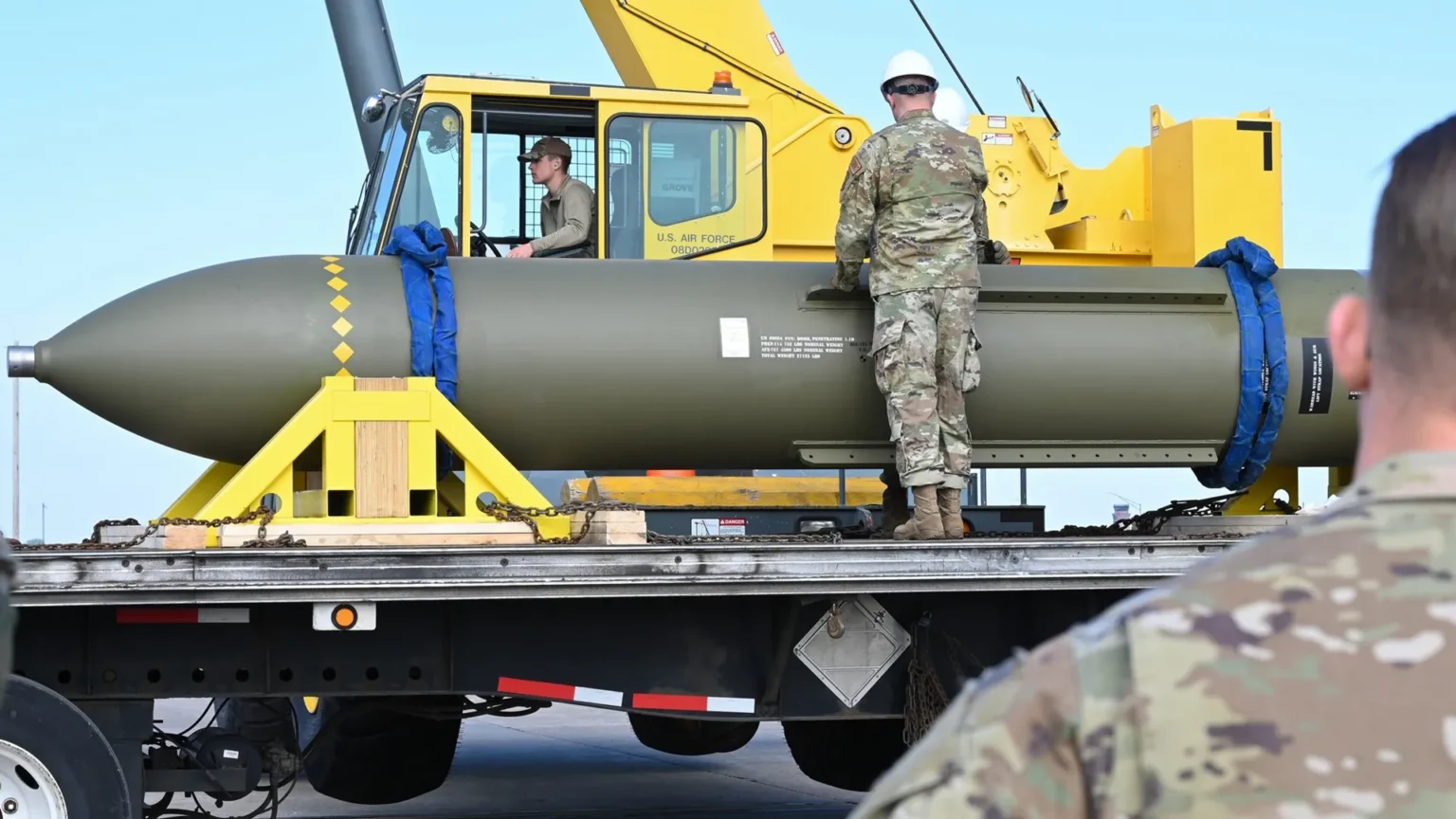Bunker Busters
Following an Israeli airstrike targeting Hezbollah leader Hassan Nasrallah in Beirut on Friday, Iranian Foreign Minister Abbas Araqchi accused Israel of using multiple US-supplied “bunker buster” bombs during the operation.
Araqchi, addressing a UN Security Council meeting on the Middle East, stated that several 5,000-pound bunker buster bombs had been dropped by Israel in residential areas of Beirut, gifted to them by the United States.
The Israeli army, on Saturday, claimed that Hezbollah leader Hassan Nasrallah had been “liquidated” during an airstrike on Beirut’s southern suburb, which targeted Hezbollah’s central command.
Israeli army spokesman Avichay Adraee announced via X that Nasrallah had been eliminated in a strike that hit a command center located beneath a residential building. Israeli media, including Channel 12, reported that around 85 bunker-penetrating bombs, each loaded with a ton of explosives, were used in the attack.
Bunker buster bombs are highly specialized weapons developed by the US military to target deeply buried or heavily fortified structures that conventional munitions cannot penetrate.
These bombs are specifically designed to destroy underground facilities, military bunkers, and hardened sites. Over time, bunker busters have become an essential asset in modern warfare, allowing military forces to neutralize key enemy infrastructure and command centers buried deep below ground.
While international law does not explicitly ban bunker buster bombs, their use in residential areas would likely violate International Humanitarian Law under the Geneva Conventions, which aims to protect civilian populations during armed conflicts.
One example of a bunker buster is the Guided Bomb Unit 28 (GBU-28), developed during the Gulf War in 1991 to destroy Iraqi military bunkers. Weighing approximately 5,000 pounds, it is equipped with a laser guidance system, enabling precise strikes on fortified targets. Its casing, made from surplus artillery barrels, provides the necessary strength to penetrate reinforced concrete or layers of earth before detonating.
Another variant is the GBU-37, a precision-guided bunker-buster bomb that uses GPS rather than a laser system. The GBU-37 is designed to target underground military facilities and can operate in poor weather conditions, ensuring accuracy in hitting deeply buried structures.
The Massive Ordnance Penetrator (MOP), or GBU-57, is the largest bunker buster in the US military arsenal, weighing a colossal 30,000 pounds. It can penetrate up to 200 feet of reinforced concrete or over 60 feet of earth before detonating.
The MOP was designed to target highly fortified and deeply buried facilities, such as underground nuclear development sites, and plays a crucial role in neutralizing critical infrastructure in countries like Iran and North Korea.
Bunker busters have exceptional penetration capabilities, allowing them to breach layers of rock, soil, or concrete before exploding deep inside their targets.
These bombs are built with ultra-strong casings that can withstand significant impact before detonation. Many bunker busters are equipped with advanced targeting systems, such as laser or GPS guidance, which ensure accurate strikes on hardened sites while minimizing collateral damage.
Additionally, these bombs are fitted with delayed fuses, enabling them to detonate only after penetrating deep into the target. This ensures maximum destruction to subterranean facilities, such as command centers or weapons storage depots.
In conclusion, US bunker buster bombs are among the most advanced munitions in modern warfare, designed to destroy heavily fortified and deeply buried targets with precision.
Their use allows military forces to neutralize critical infrastructure and underground facilities, making them vital assets in achieving strategic military objectives while limiting collateral damage. However, their deployment in civilian areas raises significant legal and ethical concerns, particularly in relation to International Humanitarian Law.


